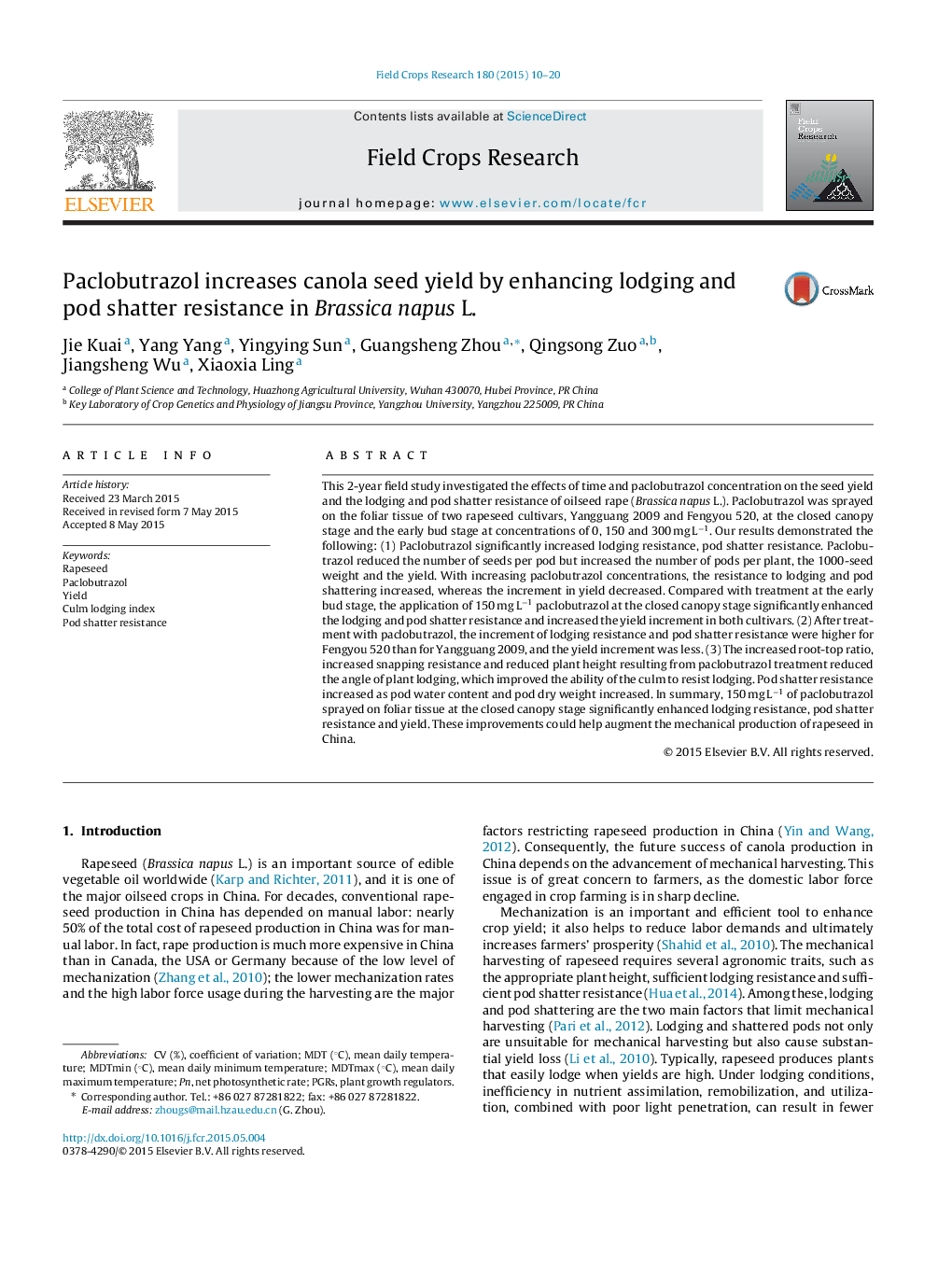| Article ID | Journal | Published Year | Pages | File Type |
|---|---|---|---|---|
| 6374775 | Field Crops Research | 2015 | 11 Pages |
Abstract
This 2-year field study investigated the effects of time and paclobutrazol concentration on the seed yield and the lodging and pod shatter resistance of oilseed rape (Brassica napus L.). Paclobutrazol was sprayed on the foliar tissue of two rapeseed cultivars, Yangguang 2009 and Fengyou 520, at the closed canopy stage and the early bud stage at concentrations of 0, 150 and 300 mg Lâ1. Our results demonstrated the following: (1) Paclobutrazol significantly increased lodging resistance, pod shatter resistance. Paclobutrazol reduced the number of seeds per pod but increased the number of pods per plant, the 1000-seed weight and the yield. With increasing paclobutrazol concentrations, the resistance to lodging and pod shattering increased, whereas the increment in yield decreased. Compared with treatment at the early bud stage, the application of 150 mg Lâ1 paclobutrazol at the closed canopy stage significantly enhanced the lodging and pod shatter resistance and increased the yield increment in both cultivars. (2) After treatment with paclobutrazol, the increment of lodging resistance and pod shatter resistance were higher for Fengyou 520 than for Yangguang 2009, and the yield increment was less. (3) The increased root-top ratio, increased snapping resistance and reduced plant height resulting from paclobutrazol treatment reduced the angle of plant lodging, which improved the ability of the culm to resist lodging. Pod shatter resistance increased as pod water content and pod dry weight increased. In summary, 150 mg Lâ1 of paclobutrazol sprayed on foliar tissue at the closed canopy stage significantly enhanced lodging resistance, pod shatter resistance and yield. These improvements could help augment the mechanical production of rapeseed in China.
Keywords
Related Topics
Life Sciences
Agricultural and Biological Sciences
Agronomy and Crop Science
Authors
Jie Kuai, Yang Yang, Yingying Sun, Guangsheng Zhou, Qingsong Zuo, Jiangsheng Wu, Xiaoxia Ling,
